Wallace Hartley was born at 92 Greenfield Road, Colne, in 1878. By the age of 15, he was giving solo violin performances and, soon after, entertained passengers on transatlantic liners. In 1912, he became bandmaster on the ill-fated Titanic and continued to lead his band as the mighty ship sank beneath the waves. His body was recovered two weeks later and brought back to Colne. Around 40,000 people lined the route of the funeral procession on its way to Colne cemetery. A statue was erected soon after, which still stands today.
Text about The Wallace Hartley.
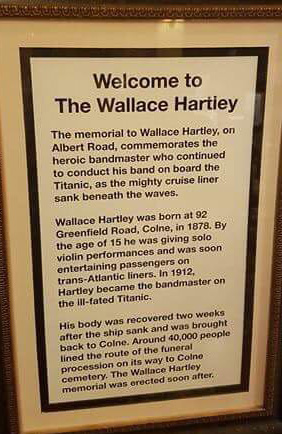
The text reads: The memorial to Wallace Hartley, on Albert Road, commemorates the heroic bandmaster who continued to conduct his band on board the Titanic, as the mighty cruise liner sank beneath the waves.
Wallace Hartley was born at 92 Greenfield Road, Colne, in 1878. By the age of 15 he was giving solo violin performances and was soon entertaining passengers on trans-Atlantic liners. In 1912, Hartley became the bandmaster in the ill-fated Titanic.
His body was recovered two weeks after the ship sank, and was brought back to Colne. Around 40,000 people lined the route of the funeral procession on its way to Colne cemetery. The Wallace Hartley memorial was erected soon after.
Photographs, prints and text about Colne’s composers.
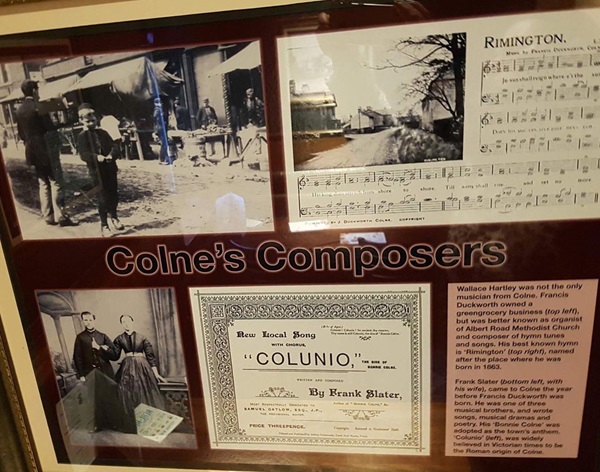
The text reads: Wallace Hartley was not the only musician from Colne. Francis Duckworth owned a greengrocery business (top left), but was better known as organist of Albert Road Methodist Church and composer of hymn tunes and songs. His best known hymn is Rimington (top right), named after the place he was born in 1863.
Frank Slater (bottom left, with his wife), came to Colne the year before Francis Duckworth was born. He was one of three musical brothers, and wrote songs, musical dramas and poetry. His Bonnie Colne was adopted as the town’s anthem, Colunio (left), was widely believed in Victorian times to be the Roman origin of Colne.
Photographs and text about the Cloth Hall.
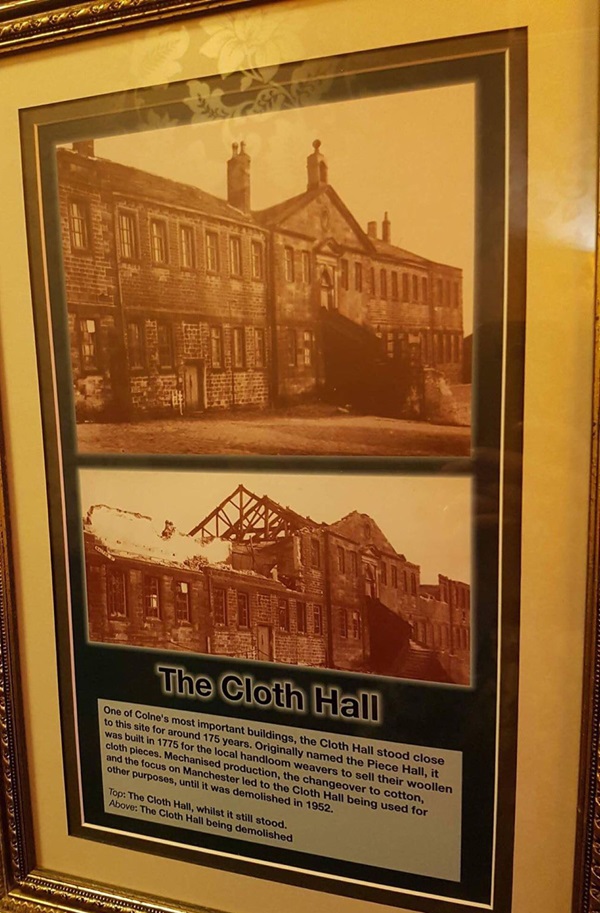
The text reads: One of Colne’s most important buildings, the Cloth Hall stood close to this site for around 175 years. Originally named the Piece Hall, it was built in 1775 for the local handloom weavers to sell their woollen cloth pieces. Mechanised production, the changeover to cotton, and the focus on Manchester led to the Cloth Hall being used for other purposed, until it was demolished in 1952.
Top: The Cloth Hall, whilst it still stood
Above: The Cloth Hall being demolished.
Illustrations and text about the witches of Pendle.
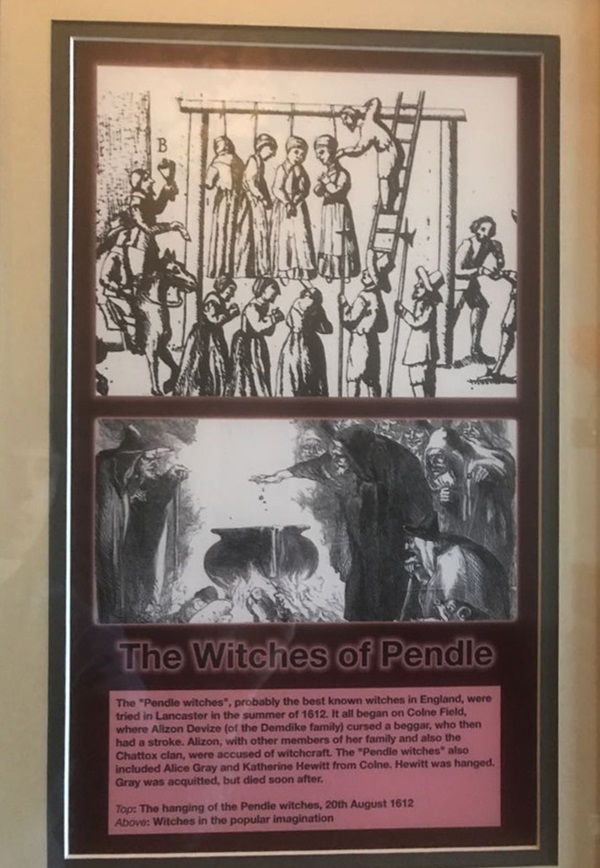
The text reads: The Pendle witches, probably the best known witches in England, were tried in Lancaster in the summer of 1612. It all began on Colne Field, where Alizon Devize (of the Demdike family) cursed a beggar, who then had a stroke. Alizon, with other members of her family and also the Chattox clan, were accused of witchcraft. The Pendle witches also included Alice Gray and Katherine Hewitt from Colne. Hewitt was hanged, Gray was acquitted, but died soon after.
Top: The hanging of the Pendle witches, 20 August 1612
Above: Witches in the popular imagination.
Photographs and text about early days in Colne.
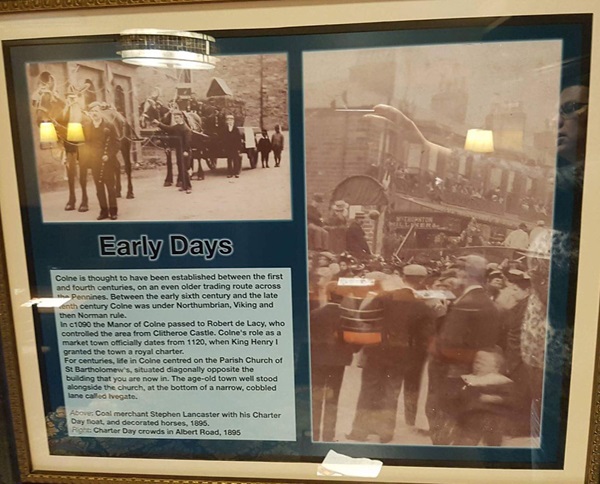
The text reads: Colne is thought to have been established between the first and fourth centuries, on an even older trading route across the Pennines. Between the early sixth century and the late tenth century Colne was under Northumbrian, Viking and then Norman rule.
In c1090 the Manor of Colne passed to Robert de Lacy, who controlled the area from Clitheroe Castle. Colne’s role as a market town officially dates from 1120, when King Henry I granted the town a royal charter.
For centuries, life in Colne centred on the parish church of St Bartholomew’s, situated diagonally opposite the building that you are now in. the age-old town well stood alongside the church, at the bottom of a narrow, cobbled lane called Ivegate.
Above: Coal merchant Stephen Lancaster with his Charter Day float, and decorated horses, 1895
Right: Charter Day crows in Albert Road, 1895.
Photographs and text about Church Street.
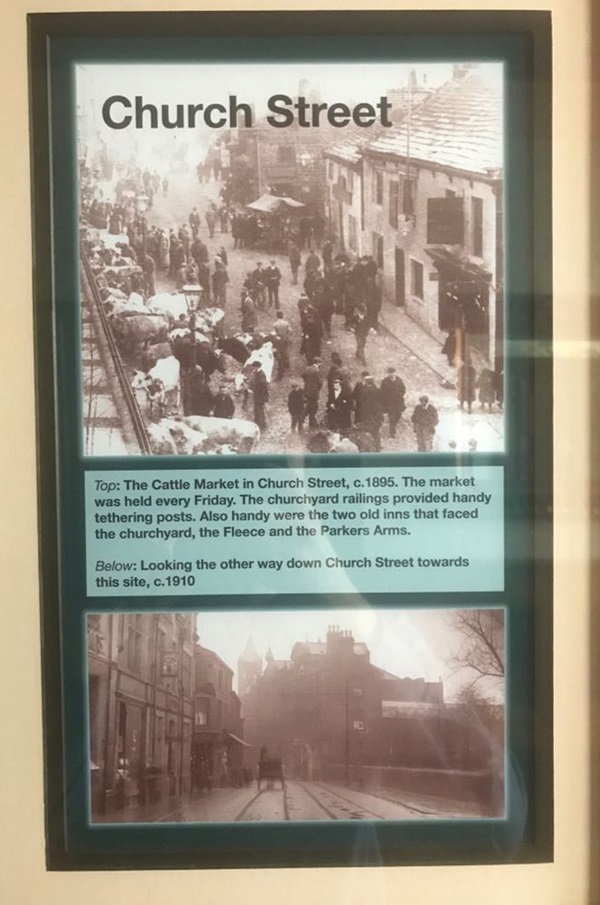
Top: The cattle market in Church Street, c1895. The market was held every Friday. The churchyard railways provided handy tethering posts. Also handy were the two old inns that faced the churchyard, the Fleece and the Parkers Arms.
Below: Looking the other way down Church Street towards this site, c1910.
A photograph of Damside as it appeared in 1927.
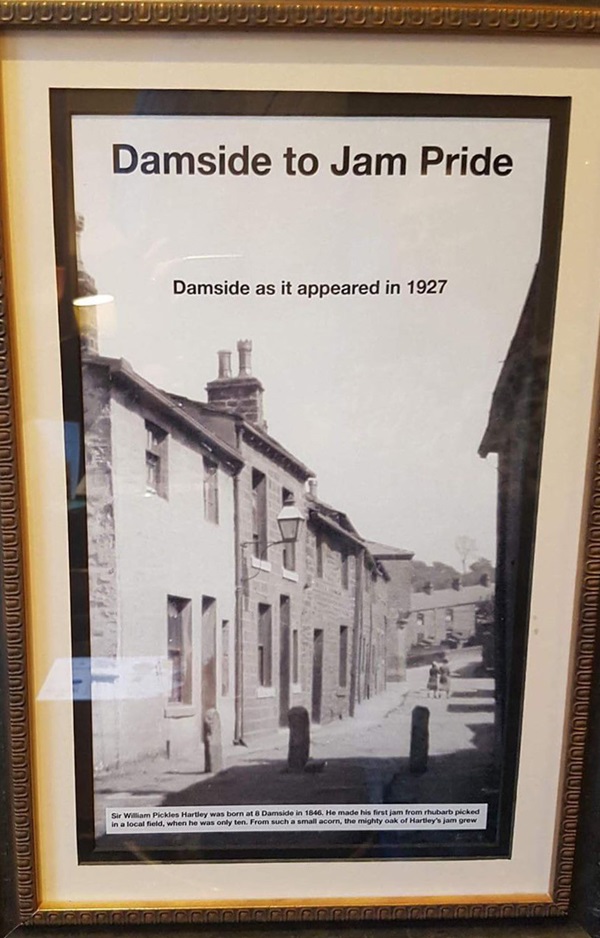
A photograph of the buildings just below the parish church, as they appeared in 1880.
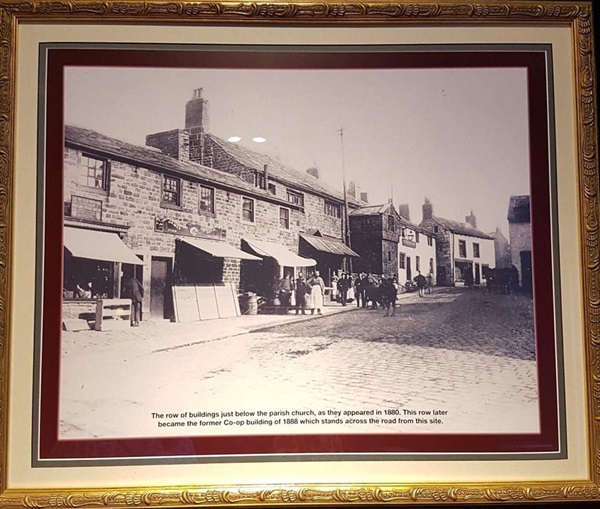
This row later became the former Co-op building of 1888 which stands across the road from this site.
A photograph of the bronze bust of Wallace Hartley on his memorial on the Grounds of the Gables, Albert Road.
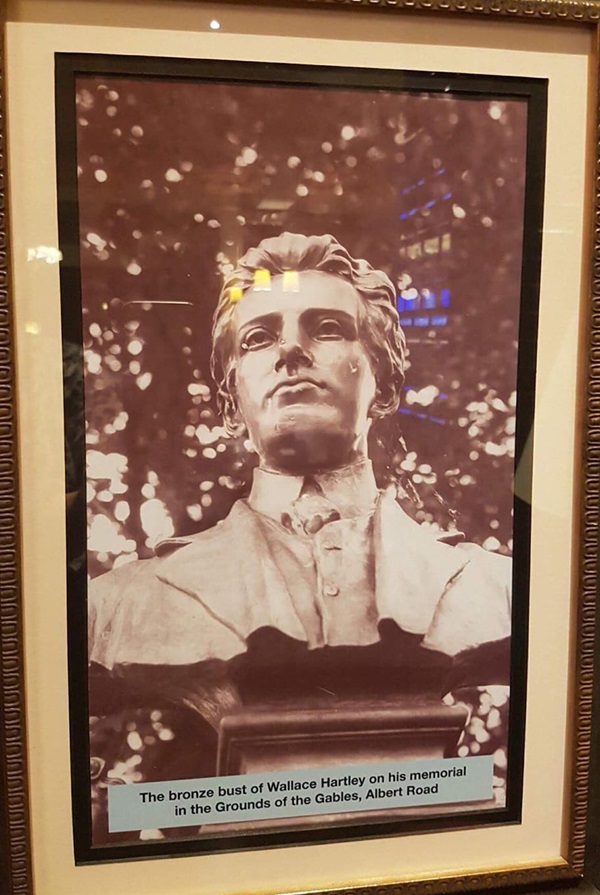
A photograph and text about Colne Town Hall.
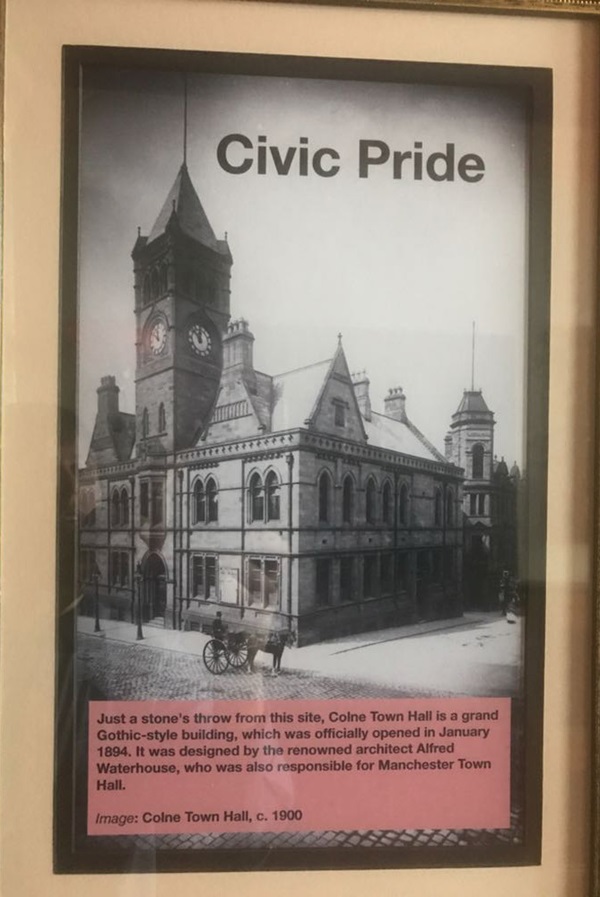
The text reads: Just a stone’s throw from this site, Colne Town Hall is a grand Gothic style building, which was officially opened in January 1894. It was designed by the renowned architect Alfred Waterhouse, which was also responsible for Manchester Town Hall.
Image: Colne Town Hall, c1900.
External photograph of the building – main entrance.
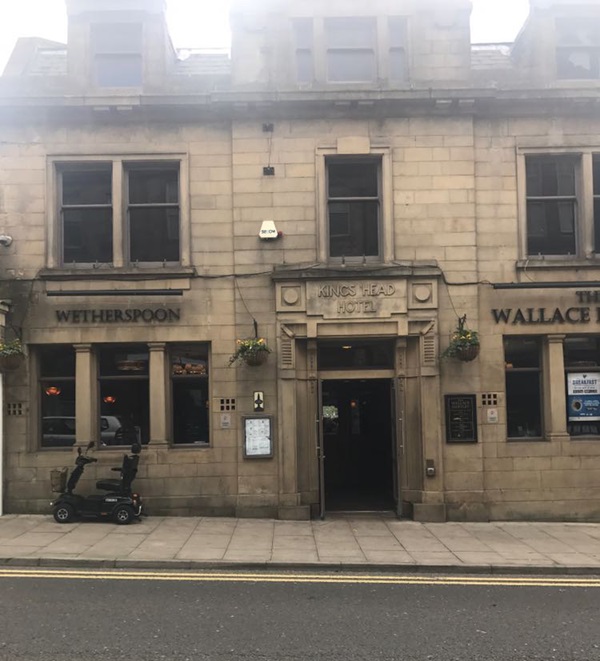
If you have information on the history of this pub, then we’d like you to share it with us. Please e-mail all information to: pubhistories@jdwetherspoon.co.uk